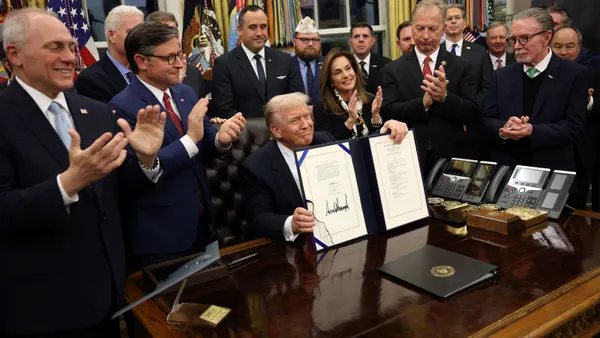Anyone familiar with leadership over the decades will be aware of some of the stereotypes at play. The traditional paradigm of leadership has it that so-called ‘male’ characteristics are some of the building blocks of successful leaders: a logical mind, task-focus, strategic thinking, assertiveness, strength, power, and courage.
But where does that leave female leadership? Women leaders are often subject to stereotypes too; they’re good listeners, have empathy for their team, are tolerant, maybe defer to others easily, and want to nurture people more than they want to make the big bucks or climb the corporate ladder.
But this sex-based divide is old, old news, and it doesn’t move our conversations about being a successful leader in the 21st century forward, at all. Because make no mistake: the leader of tomorrow will need to develop skills that will help them face the new challenges of a disruptive and disconnected workplace.
The future is human
In a keynote speech last year, Barack Obama said that ‘technology is driving disruptive change at a pace we’ve never seen before’. And what he meant is that the tentacles of technological disruption are working their way into our lives and workplaces like never before. Teams are globally dispersed; routine tasks are undertaken by robotic machines; we’re often working with screen-based technologies that continue to degrade our already-poor eight-second attention span. The changes coming are of such magnitude that 38% of jobs in the US are set to become replaced by robots in the next two decades.
These are new challenges, of a different order than we’ve faced before. And if we look at sex-based leadership stereotypes, then we can see that neither traditional male nor female leadership is the answer. You can’t negate disruption with assertiveness; you won’t stop progress by being a good listener. So exactly what will the future of leadership look like?
Well, it isn’t solely male; nor is it solely female. In our disrupted, disconnected future, the great leaders are simply human.
Your workplace is a community
Being a truly human leader means recognizing other people for the humans that they are. It means looking at the people in your organization in a 360-degree way, and realizing that they’re far more than a human resource or a revenue stream to be mined. The people in your workplace are more than a collection of workers; they’re a community of their own, and within that community is potential, heart, ambition, creative thinking, the desire to do good, the need for companionship, a thirst for a common goal, and the need to be seen as the unique humans that they are.
The leader who forgets that will never get the very best from their workforce. By plotting people into their roles and not letting their varied, wondrous human skills live and breathe, you’re limiting their humanity. But by structuring your organization in such a way that these human characteristics can be brought out into the light, you’re that much more likely to be amazed and inspired by what’s possible when humans are allowed to display their whole selves, and not just the version of themselves that is acceptable in the corporate workplace.
That’s why traditional top-down functional and hierarchical organizations have started to seem like the workplaces of the past. And it’s why the freshest companies build spaces that work for people; collaboration spaces are dotted everywhere, people are encouraged to come together in communal think-spaces, or perhaps the entire workforce chooses to be remote, because that’s what’s best for their work-life balance.
Whatever changes you make to your organization in the coming disruptive, disconnected, robotic years, be sure to center your decisions around humanity. That’ll make you a leader that’s empathic and ambitious, a strategic thinker and an intuitive listener, strong yet nurturing, courageous yet tolerant. In short, it’ll make you a leader of the future – male, female, whatever. If you’re acting as a human first, you’re getting 21st century leadership right.









